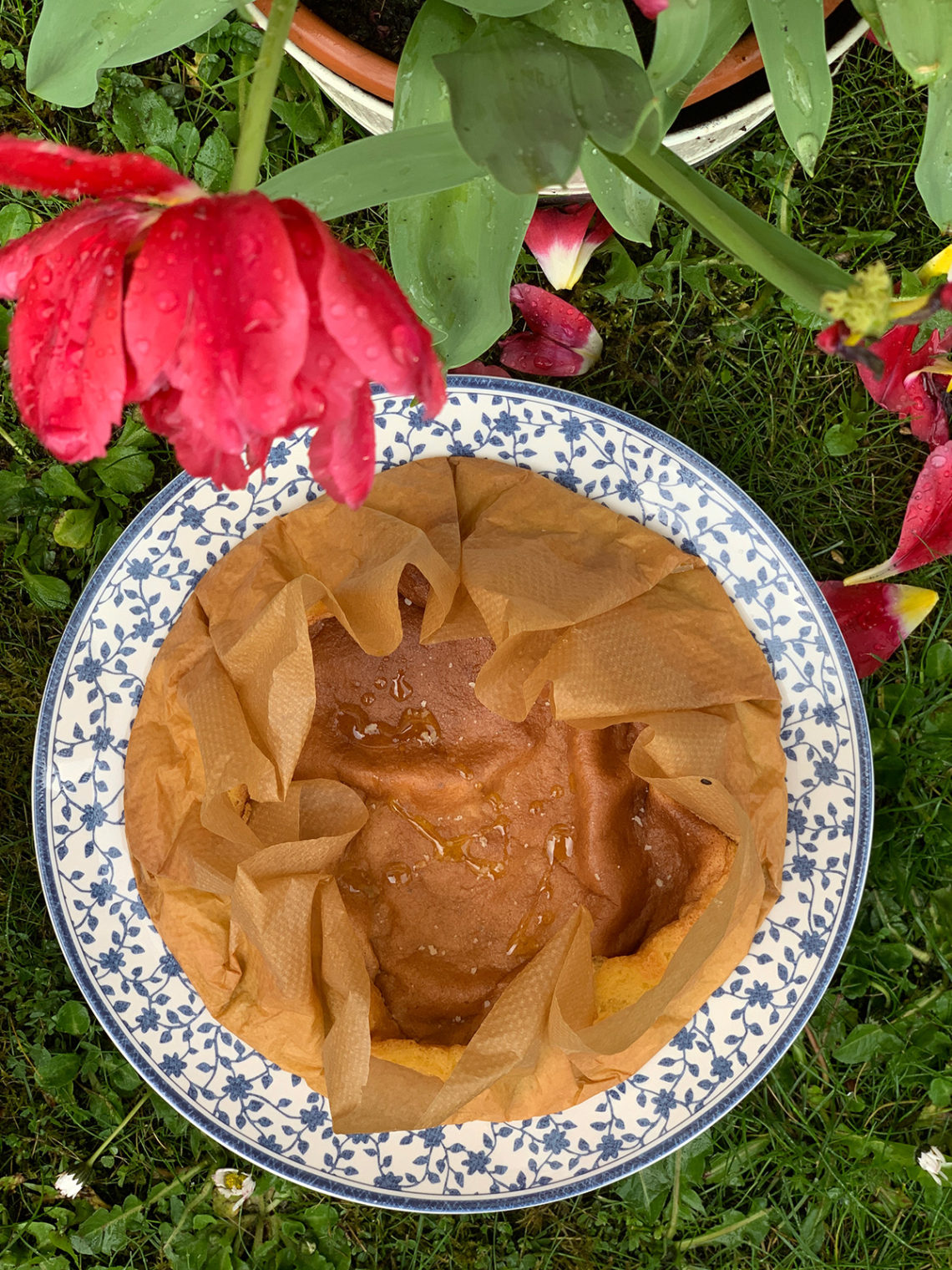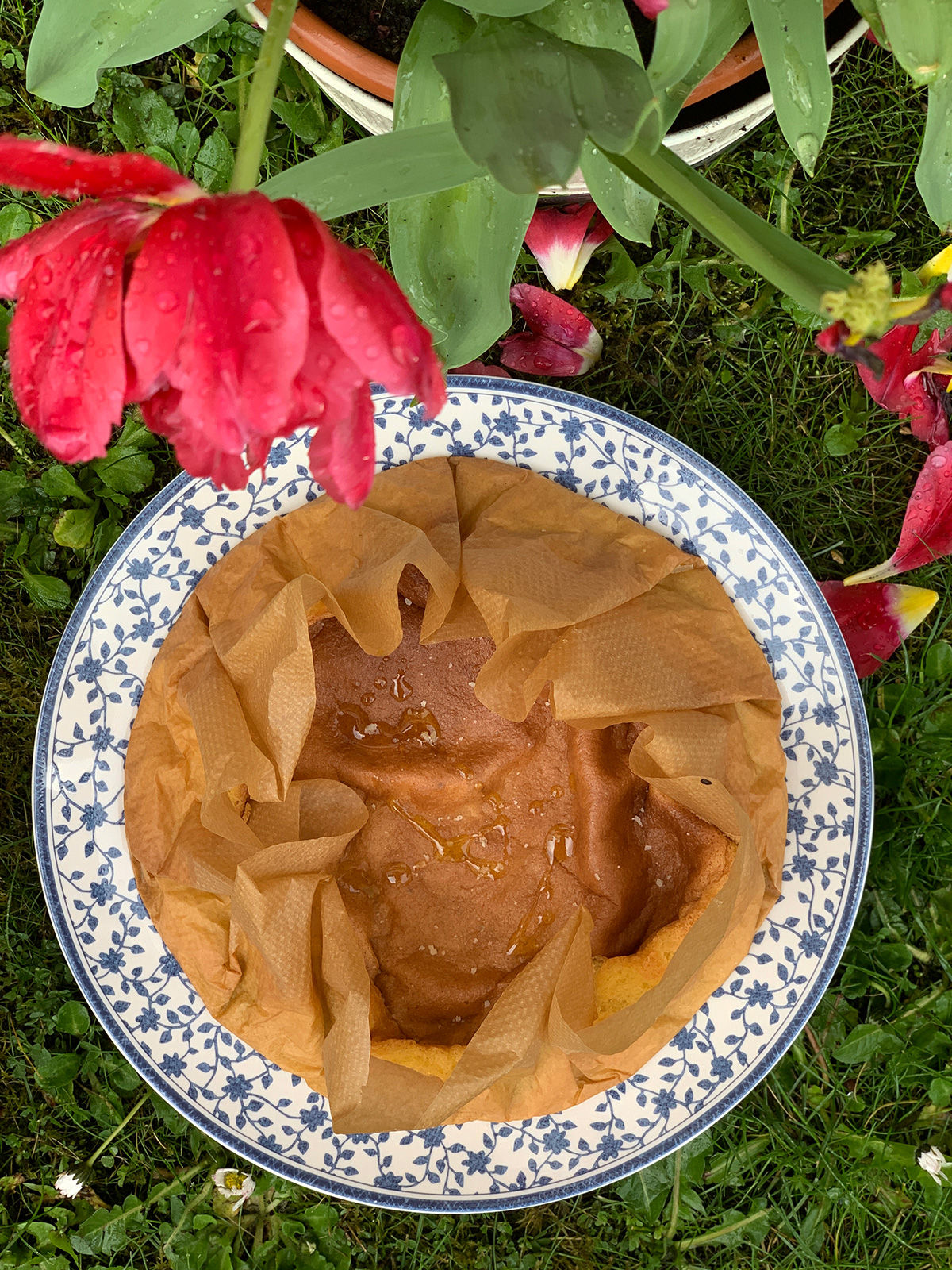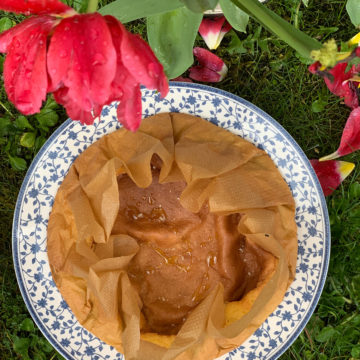The recipe for this cake belongs to the famous Michelin-starred Portuguese chef Nuno Mendes. Like all talented people, Nuno is a man with a very interesting destiny, he calls himself a traveling chef. He started his journey when he was 16 years old, having left his native Lisbon for America. Since then, he lived and worked in different countries, learning the cuisines of other peoples, improving his culinary skills. He is still absolutely in love with traditional Portuguese cuisine. He creates new versions of old recipes that have their roots deep in the Middle Ages. Pão de ló, or “Castilian bread”, was known as far back as the 16th century, when Portuguese sailors brought it to Japan. This recipe was the basis of the famous Japanese cake Castella. Nuno gave Pão de ló a modern twist: he added the best Portuguese olive oil, which, as a rule, cannot be found in sponge cake recipes.
- Prep time: 30 minutes
- Cook time: 12 minutes + 6 hours’ resting
- Serves: 4
- Difficulty: easy
- Course: pastry
- Cookware: stand mixer, silicone spatula, baking dish 20cm, parchment paper
- Cuisine: Portuguese
Ingredients
- 100 g sugar
- 4 eggs
- 1 egg yolk
- 80 ml olive oil
- 20 g flour
- salt flakes
Cooking method
Step 1
Heat the oven to 200°C. Cut out a 30 cm circle from parchment. Line the baking dish with parchment circle.
Step 2
Add sugar, eggs, and yolk in a bowl. Beat with a mixer for 30 minutes, until the mixture is light and fluffy. Add olive oil to the batter, pouring it in a thin stream and stirring the batter with a spatula. Add flour to the batter. Stir gently so that no olive oil remains in the bottom of the bowl. Quickly put the batter into baking dish. Place in the oven and bake for 8-12 minutes. Remove from the oven and leave the cake to set for 5-6 hours: it should settle and steep. Lightly drizzle olive oil over the cake and sprinkle it a little with salt flakes before serving.



My tips and tricks:
This cake is eaten in two ways. The first is when it’s completely baked in the middle. And if you choose this option, then the baking time of the cake will be at least 12 minutes. Remove it from the oven when its sides are static, and it is a little watery in the very centre. Second option, when the cake is baked for about 8 minutes and removed when the edges and top crust are slightly baked, but it is still quite liquid in the centre. In fact, this is how it is most often eaten in Portugal: the liquid centre in this case serves as a sauce for the cake, which for you and me, I suppose, is a little unusual. Choose the option you like 🙂
- 100 g sugar
- 4 eggs
- 1 egg yolk
- 80 ml olive oil
- 20 g flour
- salt flakes
- Heat the oven to 200°C. Cut out a 30 cm circle from parchment. Line the baking dish with parchment circle.
- Add sugar, eggs, and yolk in a bowl. Beat with a mixer for 30 minutes, until the mixture is light and fluffy. Add olive oil to the batter, pouring it in a thin stream and stirring the batter with a spatula. Add flour to the batter. Stir gently so that no olive oil remains in the bottom of the bowl. Quickly put the batter into baking dish. Place in the oven and bake for 8-12 minutes. Remove from the oven and leave the cake to set for 5-6 hours: it should settle and steep. Lightly drizzle olive oil over the cake and sprinkle it a little with salt flakes before serving.


 The recipe for this cake belongs to the famous Michelin-starred Portuguese chef Nuno Mendes. Like all talented people, Nuno is a man with a very interesting destiny, he calls himself a traveling chef. He started his journey when he was 16 years old, having left his native Lisbon for America. Since then, he lived and worked in different countries, learning the cuisines of other peoples, improving his culinary skills. He is still absolutely in love with traditional Portuguese cuisine. He creates new versions of old recipes that have their roots deep in the Middle Ages. Pão de ló, or “Castilian bread”, was known as far back as the 16th century, when Portuguese sailors brought it to Japan. This recipe was the basis of the famous Japanese cake Castella. Nuno gave Pão de ló a modern twist: he added the best Portuguese olive oil, which, as a rule, cannot be found in sponge cake recipes.
The recipe for this cake belongs to the famous Michelin-starred Portuguese chef Nuno Mendes. Like all talented people, Nuno is a man with a very interesting destiny, he calls himself a traveling chef. He started his journey when he was 16 years old, having left his native Lisbon for America. Since then, he lived and worked in different countries, learning the cuisines of other peoples, improving his culinary skills. He is still absolutely in love with traditional Portuguese cuisine. He creates new versions of old recipes that have their roots deep in the Middle Ages. Pão de ló, or “Castilian bread”, was known as far back as the 16th century, when Portuguese sailors brought it to Japan. This recipe was the basis of the famous Japanese cake Castella. Nuno gave Pão de ló a modern twist: he added the best Portuguese olive oil, which, as a rule, cannot be found in sponge cake recipes.